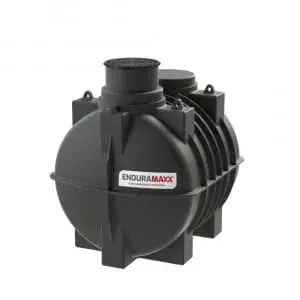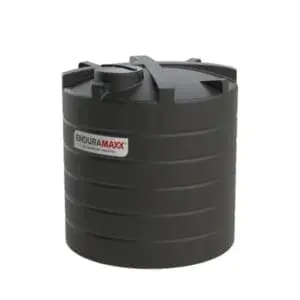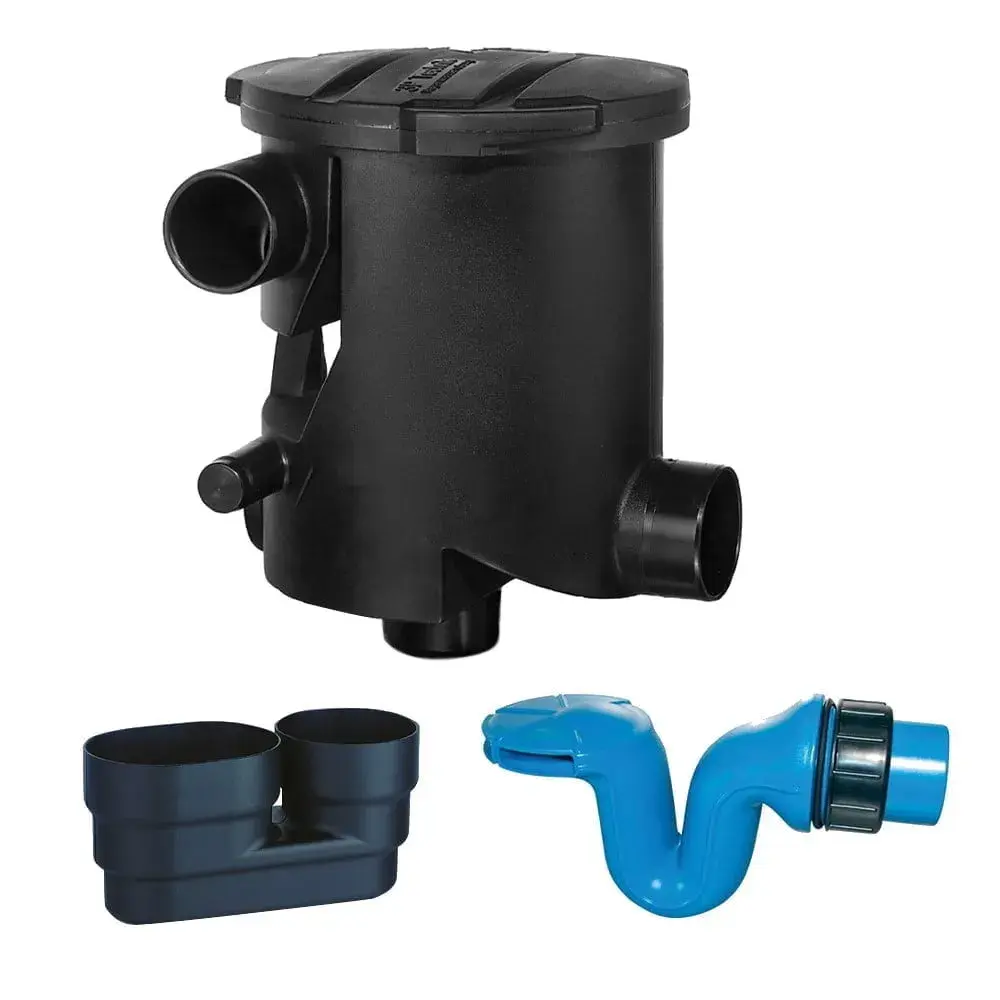Watering the garden with rainwater
Rainwater for watering plants - water is getting more expensive and scarcer, but if you want a pretty garden, you must supply sufficient water, or all those pretty plants wilt and die. Even in the UK, we have periods when it is dry - and even sometimes, hosepipe restrictions are imposed on the garden hoses.
But rainwater is free - is it not? And can it not be stored up for those dry spells?
Plants need water the most in hot, dry, and windy weather, at the same time when water companies are most under demand for water resources. Newly planted plants, shrubs, trees, herbaceous perennials, seedlings, and vegetables are most vulnerable to water shortages when they are first planted. As their roots grow and established into the deeper, watering will need to be managed until these are established.
Rainwater is better for watering plants.
Rainwater is better for your plants as it often has a lower ph. In mains water treatment, some minerals are used in hard water areas, which can raise the pH of your root zone. Rainwater is good for ericaceous plants, including Rhododendron, Camellia, Azalea & Pieris.
View our rainwater harvesting tanks for garden watering systems here
What do you need to use rainwater?
This depends upon the size of your garden and the types of plants you grow. A small garden will simply need a water butt or small rainwater tank, with a lid to keep out leaves and small animals. If it is connected by a drain to a roof area, so much the better.
A larger area may need a larger tank and a more complex system for harvesting the rainwater. An underground tank with a pump to bring up the water as needed may be the solution. In either case, you can save money once your rainwater harvesting system is in place.
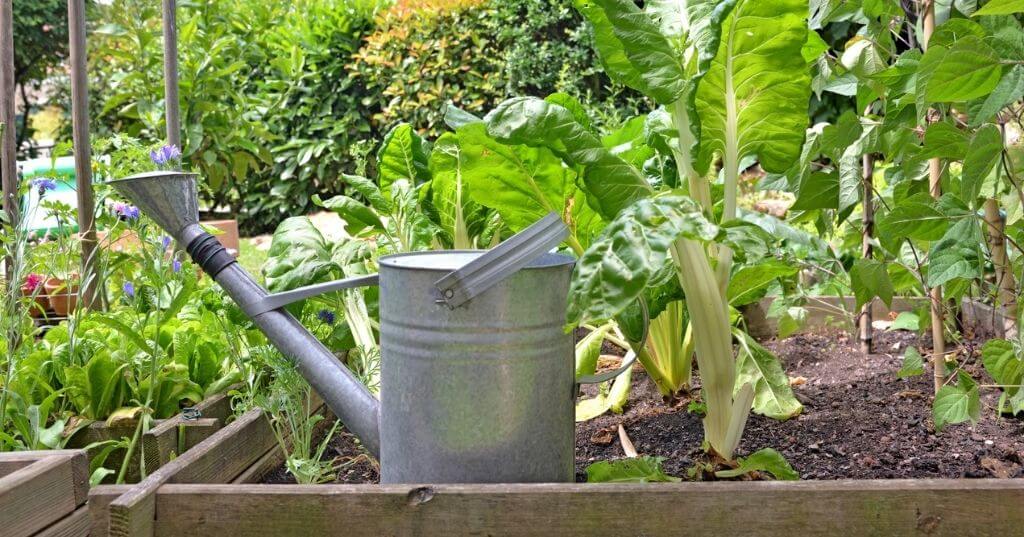
Efficient ways to water your plants
- Plants take up water through their roots, so sprinkling a light shower with a watering can in the heat of the sun is not very efficient. The water evaporates, and the plants cannot get to the water on the surface.
- Watering in the early morning is best because the plants will soon be using the water and sunlight to grow.
- The position of the plant affects how readily it can expand its roots and hence how much water it needs. Plant pot plants need more frequent watering than one growing on a border.
- The type of soil makes a difference- clay holds more water - but is harder for the plant to extract than sandy soil. Mulch retains water, and you may need to water less often.
You may need to water more slowly to seep down to the root layer.
Avoid a drought
Once you have let our plants dry out, you will need to water slowly and carefully. This is where a tank full of rainwater can be an asset.
4 Methods of garden watering
Rainwater is a great choice. It is free, it is available if you have a storage tank, and it is clean. Tap water, on the other hand, is not free; it must be transported and that costs energy and may contain chemicals that do not suit your plants. (In very dry spells, you may be reduced to using greywater - the water that has been used by washing machines and showers.)
Watering cans
You can point the can onto the plant's foliage to prevent yourself from watering the weeds.
Self-watering pots and containers
Save yourself time by using a pot with a built-in reservoir. The roots can access this water by capillary action as and when they need it.
Seep hoses
They need setting up. The holes in the hoses or pipes are placed just where they are needed. They can be slightly underground to water the roots. The system can be connected directly to our rainwater water tank, with a timed pump to deliver the water as required, forming an automated irrigation system.
Sprinklers
Sprinklers can be connecter to a rainwater storage tank and can be installed to supply a great deal of water.
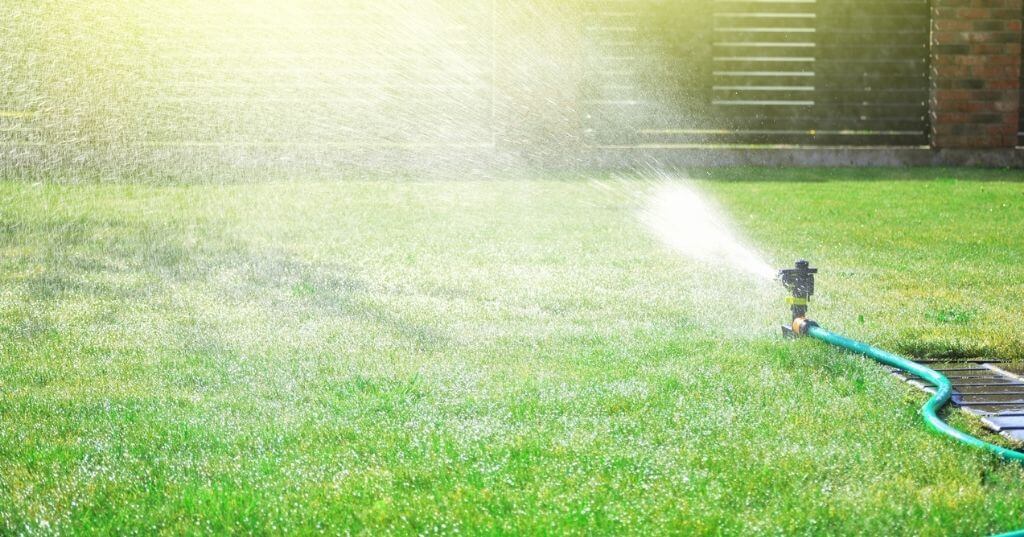
Other domestic uses for your rainwater
These include:
- Washing your car - the water is clean
- Filling your garden pond - soft water suits ponds and is free from chlorine
- Filing paddling pools - feels fresh and cool
- Flushing the toilet - although you need a filter before using rainwater for this.
- Washing clothes - soft water is a nice change if you live in a hard water zone.
How to store rainwater for watering plants
Enduramaxx offers a wider range of suitable water tanks or rain barrels for domestic rainwater harvesting, from 50 litres water butt to 2,000-litre rain water storage tanks. For larger watering systems, up to 25,000 litre water tanks are available. With robust construction, seam-free and smooth, they are durable, reliable and come in a range of sizes to suit your requirements for stored water.
However, space might be limited, and we have slimline tanks on offer to collect water and can be placed upright or horizontal in the garden. These tanks are black or green which is opaque to minimise algae growth in the water. Rainwater level gauges are available to see the level in the water tank. Many are baffled to reduce the movement of water and add extra strength.
More details on how much rain falls in your area are available here
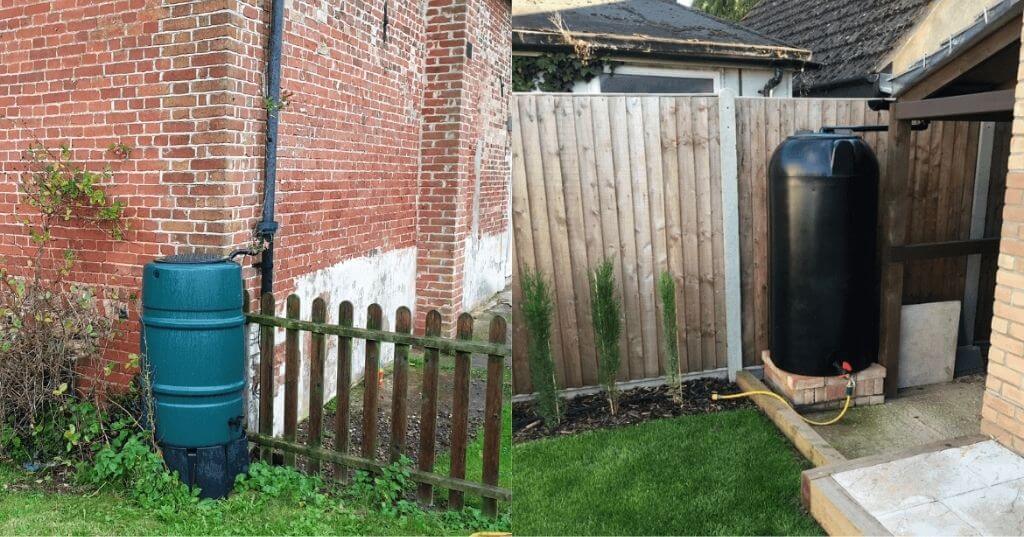
These water harvesting tanks can be fitted with a bib tap which is a brass fitting that is primarily used for outside garden taps. These bib taps have a 1/2' inch, 3/4 inch or 1" male thread, which connects the outlet on water tanks to fit a water pipe. The water flow is adjusted by turning the handle open or shut.
All our tanks come with a 10-year guarantee, and we are always pleased to discuss your specific needs or rainwater for watering. Please call us on 01778 562810.
Posts By Topics
- Blog (303)
- Chemical Storage Tanks (118)
- Chemical Dosing Tanks (114)
- Chemical Tanks (114)
- Water Tanks (58)
- Rainwater Harvesting Tanks (43)
- Vertical Rainwater Tanks (31)
- Vertical Storage Tanks (31)
- Cone Bottom Tanks (19)
- Conical Cone Tanks (18)
- Rainwater Harvesting (17)
- Water Bowsers (15)
- Horizontal Tanks (14)
- Potable Water Tanks (13)
- Farming (9)
- Case Studies (8)
- Industrial Storage Tanks (7)
- Liquid Fertilser Storage Tanks (6)
- WRAS Approved Potable Tanks (6)
- Wine and Beer Production (6)
- Horizontal Transport Tanks (5)
- Microbrewery (5)
- Rainwater (5)
- Category 5 Break Tanks (4)
- Cider Production (4)
- Mixer Tanks (4)
- Molasses Tanks (4)
- Polyethylene tanks (4)
- Rainwater Filter Kits (4)
- SPECIALIST & BESPOKE TANKS (4)
- Bunded Tanks (3)
- Slimline Tanks (3)
- WRAS Approved (3)
- Clarification Tanks (2)
- Crosslinked Polymer Tanks (XLPE) (2)
- Fertiliser Tanks (2)
- Sump Tanks (2)
- Tank Installation (2)
- Water Butt (2)
- underground water tanks (2)
- ACCESSORIES & FITTINGS (1)
- ATV & UTV SPRAYING UNITS (1)
- Above Ground Effluent Tanks (1)
- Bespoke Tank Frames (1)
- Category 5 Turret (1)
- Caustic Soda Tanks (1)
- Closed Top Bunded Tanks (1)
- Craft beer (1)
- Effluent Tanks (1)
- Enduramaxx (1)
- Ferric Chloride Tanks (1)
- Fire Safety Regulations (1)
- Fire Sprinkler Water Storage Tanks (1)
- Industrial Water Tank (1)
- Open Top Bunded Tanks (1)
- Open Top Cone Tanks (1)
- Open Top Vertical Tanks (1)
- Polyethylene Potable Water Tanks (1)
- Polyvinylidene Fluoride (PVDF) Tanks (1)
- Polyvinylidene Fluoride Tanks (PVDF) (1)
- Pressure Washers (1)
- Pro Series Spot Sprayers (1)
- RWH (1)
- Sodium Hydroxide Storage Tanks (1)
- Sprayer Fill-up Tanks (1)
- Uncategorised (1)
- liquid fertiliser tank (1)
Sign up to the newsletter
enduramaxx.marketing
Related Posts
Water Supply From A Well, Borehole Or Rainwater Tank
Water Supply From A Well, Borehole Or Rainwater storage tank – With the advent of water meters and...
Agricultural Farm Water Tanks: For Rainwater And Drinking Water
Enduramaxx manufactures a range of agricultural farm water tanks which include arranging of...
Save Water With The Best Quality Rainwater Tanks Above & Below Tanks
Save Water with the Best Quality Rainwater Tanks, for those living on rural properties and running...
Related Products
From £1,080.00 inc. VAT
£900.00 exc. VAT
From £1,344.00 inc. VAT
£1,120.00 exc. VAT
From £768.00 inc. VAT
£640.00 exc. VAT
£480.00 inc. VAT
£400.00 exc. VAT


